Little known amateur golf stories at The Country Club
6/15/2022 | by Sean Melia of AmateurGolf.com
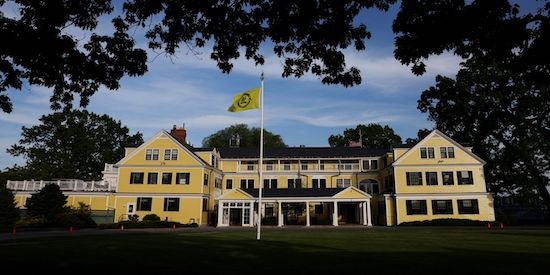
"The next Nicklaus" dominated TCC in 1968, Lawson Little won with 25 clubs in his bag, and the invention of the stimpmeter
The story of Francis Ouimet is just one aspect of amateur golf's long history at The Country Club. This spring, we took a walk through the newly restored locker room building at TCC. The story of various amateurs who have walked the grounds speckle the walls with incredible stories of triumph and intrigue. It feels like a museum tracking how the game has grown and transformed over the last 125 years.
Special thanks to Club Historian Fred Waterman for showing us around.
Here are some amateur stories from The Country Club that aren't often told.
Lawson Little and the 14 club rule
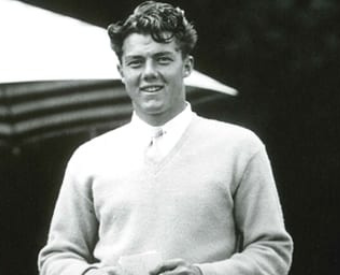
Lawson Little
In 1934 and 1935, Little won the U.S. Amateur and British Amateur four times. It was coined the "Little Slam." The Country Club was host to the 1934 U.S. Amateur. Little, nicknames "Cannonball", typically competed with at least 25 clubs in his bag. He had 31 in his bag at the 1935 British Am. At the time, there was no limit on the number of clubs a player could carry. However, the USGA-treasurer and member of The Country Club, Harold Pierce, suggested limiting the number of clubs a player could have. They settled on 14. Little, a Newport, Rhode Island native, won the 1940 U.S. Open with 14 clubs in his bag.
Betty Hicks Newell and a lifetime of golf
The 1941 U.S. Women's Amateur champion had only been playing golf for four years when she arrived at The Country Club. Her victory catapulted Newell into a life of golf. She was the co-founder of The Women's Professional Golf Association which gave birth to the LPGA, where she acted as a tournament director, publicist, and photographer.
Jess Sweetser
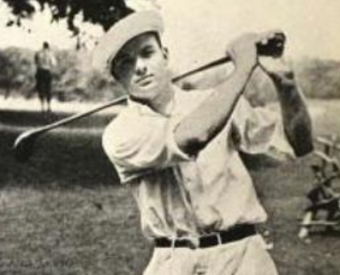
Jess Sweetser
The 1922 U.S. Amateur champion at The Country Club, Sweetser set the course record with a score of 69. He also dispatched Bobby Jones 8&7 in the semi-final match. Sweetser, a Yale graduate, travelled for the 1926 British Open and reached the final. His opponent in the championship match was late due to a car accident and officials were prepared to award victory to Sweetser, but he hid until Archie Simpson arrived.
Ouimet and Sweetser return as Walker Cup captains
In 1932 Ouimet was a victorious playing captain in the Walker Cup. In 1973, Sweetser returned 71 years after his U.S. Amateur triumph to earn a victory and revenge for a 1971 loss at St. Andrews to the Great Britain and Ireland team.
A phenom flames out
Eddie Pierce was supposed to be the next big thing in golf. He dominated the 1968 U.S. Junior Amateur championship with his strength and skill. The dazzling amateur, however, couldn't live up the title of "The next Nicklaus" and instead lived the fast life. He skipped high school classes to play big money games. He never won as a professional and later said, "I lived it 120 percent. Man, I had a good time."
Military Men
The 1954 U.S. Amateur final was played between Air Force Lt. Hillman Robbins and Bud Taylor, a dentist who spent time in the military, even working on General Eisenhower's teeth days before the D-Day invasion. Taylor was 40 years-old. He was no match for Robbins in the final, as the high heat and long week caught up with the dentist.
Jay Sigel's accidental amateur status
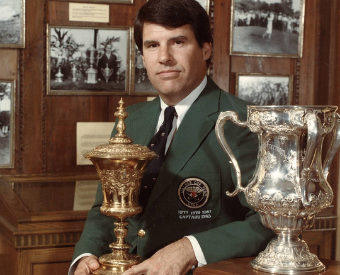
Jay Sigel
It seemed destined that Sigel would turn professional. He was an All-American at Wake Forest in 1963, and then he put his had through a glass door and damaging his ulner nerve in his left wrist. He lost 35% of his strength. His dreams were dashed, but he managed to learn the game with a new grip and rose the rankings in the amateur game. 19 years after the accident, Sigel won the 1982 U.S. Amateur at The Country Club. He won again in 1983, both finals were decided by a score of 8&7. Sigel played on nine Walker Cup teams, and at the age of 50 finally realized his college dream and turned pro, winning eight times on the senior tour.
Champion, instructor, and author
Genevieve Hecker won the 1902 U.S. Women's Amateur championship at The Country Club. She was 18 years old and was known as "America's first female golfing sensation." The 1902 win was her second in a row. Two years later, Hecker wrote the first golf book specifically for women, presenting "The royal and ancient game to the feminine inquiring mind."
Edward Stimpson's new tool
Edward Stimpson attended the 1933 U.S. Open at Oakmont. It generated a rather disappointing result as local club pro Sam Park Jr. won the tournament. Why did Parks outlast and outwit the best golfers in the world? He played Oakmont regularly in preparation for the championship and understood the variation of speed from green to green. It was a drastic enough difference that other players couldn't figure it out in time. Hence, Parks was the national champion in 1933.
The Stimpmeter was born. But not without a lot of consternation. The USGA deemed the simple device not scientific enough, as it was simply a 36 inch wooden ramp with a groove for the ball to travel down 30 inches of this ramp.
It took 40 years for the USGA to crack and admit that the Stimpmeter was the right tool for the job, and at the 1976 U.S. Open at the Atlanta Athletic Club all the greens were dialed to a speed of 7 on the stimpmeter.
Special thanks to Club Historian Fred Waterman for showing us around.
Here are some amateur stories from The Country Club that aren't often told.
Lawson Little and the 14 club rule

Lawson Little
The 1941 U.S. Women's Amateur champion had only been playing golf for four years when she arrived at The Country Club. Her victory catapulted Newell into a life of golf. She was the co-founder of The Women's Professional Golf Association which gave birth to the LPGA, where she acted as a tournament director, publicist, and photographer.
Jess Sweetser

Jess Sweetser
Ouimet and Sweetser return as Walker Cup captains
In 1932 Ouimet was a victorious playing captain in the Walker Cup. In 1973, Sweetser returned 71 years after his U.S. Amateur triumph to earn a victory and revenge for a 1971 loss at St. Andrews to the Great Britain and Ireland team.
A phenom flames out
Eddie Pierce was supposed to be the next big thing in golf. He dominated the 1968 U.S. Junior Amateur championship with his strength and skill. The dazzling amateur, however, couldn't live up the title of "The next Nicklaus" and instead lived the fast life. He skipped high school classes to play big money games. He never won as a professional and later said, "I lived it 120 percent. Man, I had a good time."
Military Men
The 1954 U.S. Amateur final was played between Air Force Lt. Hillman Robbins and Bud Taylor, a dentist who spent time in the military, even working on General Eisenhower's teeth days before the D-Day invasion. Taylor was 40 years-old. He was no match for Robbins in the final, as the high heat and long week caught up with the dentist.
Jay Sigel's accidental amateur status

Jay Sigel
Champion, instructor, and author
Genevieve Hecker won the 1902 U.S. Women's Amateur championship at The Country Club. She was 18 years old and was known as "America's first female golfing sensation." The 1902 win was her second in a row. Two years later, Hecker wrote the first golf book specifically for women, presenting "The royal and ancient game to the feminine inquiring mind."
Edward Stimpson's new tool
Edward Stimpson attended the 1933 U.S. Open at Oakmont. It generated a rather disappointing result as local club pro Sam Park Jr. won the tournament. Why did Parks outlast and outwit the best golfers in the world? He played Oakmont regularly in preparation for the championship and understood the variation of speed from green to green. It was a drastic enough difference that other players couldn't figure it out in time. Hence, Parks was the national champion in 1933.
The Stimpmeter was born. But not without a lot of consternation. The USGA deemed the simple device not scientific enough, as it was simply a 36 inch wooden ramp with a groove for the ball to travel down 30 inches of this ramp.
It took 40 years for the USGA to crack and admit that the Stimpmeter was the right tool for the job, and at the 1976 U.S. Open at the Atlanta Athletic Club all the greens were dialed to a speed of 7 on the stimpmeter.
Most Popular Articles
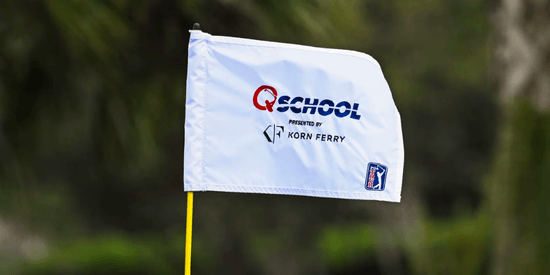
2025 PGA TOUR Q-School Guide: Sites, Scores, and Who Advanced
Dec 5, 2025Second Stage is complete and Final Stage awaits at Sawgrass — follow every Q-School leaderboard and the players still chasing
2025 LPGA TOUR Q-Series: Final Qualifying Stage FINAL SCORING
Dec 8, 2025Helen Briem earns medalist honors, 31 players headed to the LPGA next year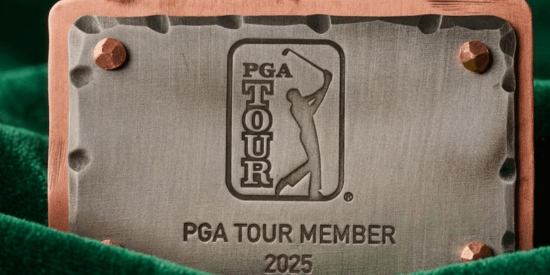
2025 PGA TOUR Q-School Final Stage: Ewart Leads Five New TOUR Card Winners
Dec 14, 2025A.J. Ewart topped Final Stage at TPC Sawgrass, leading five players who secured PGA TOUR membership for 2026.
Australian Open at Royal Melbourne: Preview, amateur bios, and how to watch
Nov 30, 2025Rory McIlroy headlines one of the championship's top fields in years - at least four amateurs will have their chance at gloryInside Gil Hanse’s Restoration of Baltusrol’s Upper Course: A Return to Tillinghast’s
Dec 11, 2025Renowned architect Gil Hanse reveals how he brought Baltusrol’s Upper Course back to life by honoring A.W. Tillinghast’s originalLoading latest news...
